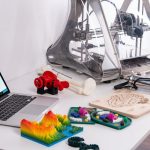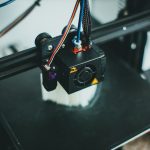In the world of additive manufacturing, Selective Laser Sintering (SLS) has emerged as a cutting-edge technology that has revolutionized the production of three-dimensional objects.
Understanding the principles behind SLS printing is crucial for grasping its capabilities and exploring its vast potential.
In this blog post, we will dive into the principle of SLS print, exploring its key components, process, advantages, and commonly asked questions.
The Basics of SLS Printing:
What is SLS Printing?
Selective Laser Sintering (SLS) is an additive manufacturing technique that utilizes a high-power laser to selectively fuse powdered materials, layer by layer, to create three-dimensional objects. The process starts with a thin layer of powder being spread onto a build platform.
Laser Fusion:
The heart of SLS printing lies in laser fusion. A powerful laser scans the cross-section of the object, selectively fusing the powdered particles together based on a 3D digital model. As each layer solidifies, the build platform lowers, and a fresh layer of powder is spread, repeating the process until the entire object is formed.
Material Selection:
SLS printing offers a wide range of material options, including polymers, metals, ceramics, and composites. The choice of material depends on the specific requirements of the object being printed, such as mechanical properties, heat resistance, or conductivity.
The SLS Printing Process:
Preparing the Build Platform:
Before the printing process begins, a thin layer of powder is evenly spread across the build platform. This ensures a solid foundation for the object to be printed.
Laser Scanning and Fusion:
A high-powered laser scans the cross-section of the object, selectively fusing the powdered particles together. The laser is precisely controlled, melting the particles and bonding them to the previous layers.
Layer-by-Layer Construction:
Once a layer is completed, the build platform lowers, and a new layer of powder is spread on top. The laser scanning and fusion process repeats for each subsequent layer until the entire object is fabricated.
Post-Processing:
After the printing is complete, the object is typically left within the excess powder. It undergoes post-processing, which involves removing the excess powder, cleaning the object, and potentially performing additional finishing steps like polishing or surface treatment.
III. Advantages of SLS Printing:
Design Freedom:
SLS printing offers remarkable design freedom, allowing the creation of complex geometries, internal structures, and interlocking parts that would be challenging to achieve with traditional manufacturing methods.
Material Versatility:
With a wide range of materials available, SLS printing enables the production of objects with diverse mechanical properties, including strength, flexibility, and heat resistance. This versatility makes it suitable for various applications across different industries.
No Need for Support Structures:
Unlike other 3D printing techniques, SLS printing does not require the use of support structures.
The surrounding powder acts as support during the printing process, reducing the need for additional design considerations or post-processing to remove support structures.
FAQs about SLS Printing:
FAQ 1: What are the main applications of SLS printing?
- Answer: SLS printing finds applications in various industries, including aerospace, automotive, healthcare, and consumer goods. It is used for prototyping, customized product manufacturing, creating patient-specific medical implants, and producing lightweight, high-strength parts.
FAQ 2: Can SLS printing be used for large-scale production?
- Answer: Yes, SLS printing is suitable for large-scale production. Its ability to produce complex geometries and utilize a wide range of materials makes it an attractive

